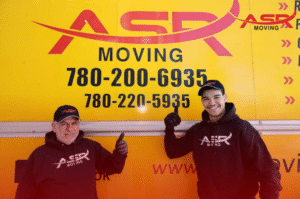A new home brings excitement, but the process of relocating belongings can create stress. Many people underestimate the time and effort required to pack properly, which often leads to last-minute chaos, misplaced items, and unnecessary frustration.
A smart packing plan protects possessions, saves time, and makes unpacking in a new space much easier. Starting early, prioritizing non-essential items, arranging boxes by weight, and using a clear labeling system all contribute to a smoother relocation.
This guide provides step-by-step strategies for every stage of preparation. It covers creating a first-night essentials kit, communicating effectively with movers, and implementing practical tips for handling fragile or heavy items. Following these methods ensures a more organized, efficient, and stress-free move.
Tip 1: Start Early
Giving yourself plenty of time to pack is crucial for a stress-free move. Starting early allows you to organize, sort, and pack your belongings without feeling rushed. A good rule of thumb is to begin packing 3–4 weeks before your scheduled move.
Many people make the mistake of leaving packing until the last minute, which often leads to disorganized boxes, forgotten items, and added stress.
In fact, a survey by Anytime Estimate revealed that 82% of Americans who moved in 2024 found the experience stressful, with 42% admitting the process even brought them to tears.
By starting early, you can tackle each room systematically and avoid the chaos of last-minute packing.
Tip 2: Pack the Least Used Items First
Begin with items you don’t use daily, such as seasonal clothing, books, home decorations, and extra kitchenware. These “least used” items can be packed and sealed well before moving day, keeping them safe and organized.
The logic is simple: packing non-essential items first reduces clutter and leaves space for daily-use items closer to the move.
Tip: Keep everyday essentials like toiletries, chargers, and a few changes of clothes in a separate, easy-access bag so they’re handy until the last moment.
Tip 3: Pack Strategically: Heavy at the Bottom, Light on Top

When packing for a move, organizing boxes correctly can prevent damage and make handling easier. Start by placing heavy items such as books, small appliances, or canned goods at the bottom of each box. Layer lighter items on top and finish with fragile items, ensuring they are well-protected.
To protect breakables, wrap them individually with bubble wrap, paper, or even soft items like clothing, towels, or blankets. This creates natural cushioning and reduces the risk of cracks or scratches during transport.
Avoid overpacking large boxes with heavy items, as this can make them difficult to lift and increase the chance of injury. In fact, the Bureau of Labor Statistics notes that over 36% of moving-related injuries come from lifting heavy boxes incorrectly.
Distributing weight across multiple smaller boxes not only keeps your belongings safe but also makes the move safer and more manageable.
Tip 4: Use Labels and Inventory Systems
Labeling boxes clearly is essential for an organized move. Write the destination room on each box, such as kitchen, bathroom, or bedroom, and include a brief description of the contents. This makes unloading faster and ensures everything ends up in the correct place.
For quicker recognition, consider using color-coded stickers or tape for each room. This visual system allows movers or family members to identify boxes at a glance, reducing confusion on moving day.
For added organization, create a digital inventory list or use a moving app to track every box. This approach helps you know exactly what you packed, where it’s located, and ensures nothing gets misplaced.
Tip 5: Create a First-Night Essentials Kit
Moving can be hectic, so having a first-night essentials kit ensures you have everything you need immediately. Include clothes for the next day, toiletries, medications, chargers, snacks, and bedding. Keeping these items accessible prevents stress after a long day of unpacking.
Hack: Pack everything in a clear bin or labeled bag so you can easily locate items without digging through boxes.
Tip 6: Communicate Clearly with Movers
Clear communication with movers is key to a smooth move. Explain how you want boxes stacked, ideally in the center of each room rather than against walls, so you have room to unpack. Highlight fragile boxes by marking them with “FRAGILE” tape or special symbols, ensuring careful handling.
If you’re doing a DIY move with friends or family, remind everyone about safety precautions, like lifting boxes correctly, wearing gloves, and avoiding overloading vehicles. Clear instructions reduce the risk of accidents and keep the moving process organized.
Tip 7: Additional Smart Packing Tips

- Use smaller boxes for heavy items: Books, canned goods, and tools are easier to lift when packed in smaller containers.
- Protect furniture: Wrap corners with moving blankets or cardboard to prevent scratches and dents.
- Roll clothes instead of folding: Saves space and reduces wrinkles.
- Keep important documents separate: Store passports, medical records, and financial papers in a secure, easy-to-access folder.
- Disassemble large furniture: Take apart beds, tables, and shelves to make moving easier and avoid damage.
- Pack one room at a time: Keeps items organized and makes unpacking faster.
- Use vacuum-sealed bags: Ideal for bulky clothing or bedding to save space.
- Label cords and electronics: Tape cords with corresponding device labels for easy setup.
Wrapping Up Your Packing Plan
A well-planned move doesn’t have to be stressful. Starting early, packing strategically, labeling boxes clearly, and keeping essentials accessible can save time, protect your belongings, and make unpacking much easier. Small steps, like cushioning fragile items or keeping a digital inventory, make a big difference on moving day.
Preparation is key. Take it one room at a time, follow the tips in this guide, and your cross-country move can stay smooth and organized. For practical advice or professional support, reach out to a trusted local mover in Edmonton.Asr Moving has the experience, resources, and dedication to make your long-distance move seamless. Our professional local mover in Edmonton handles every detail—packing, storage, transportation, and timely delivery—so you can focus on starting the next chapter of your life with confidence.



